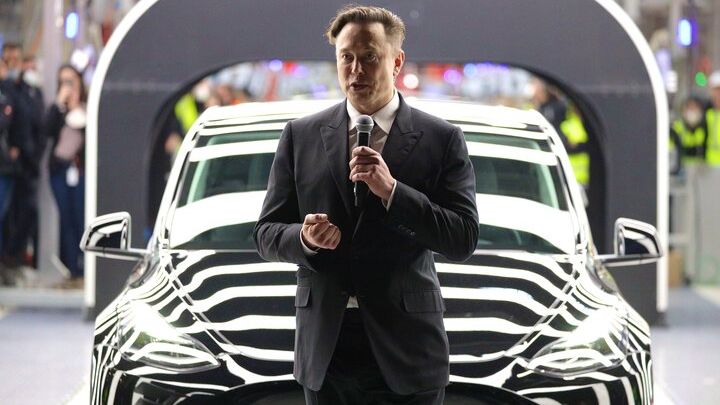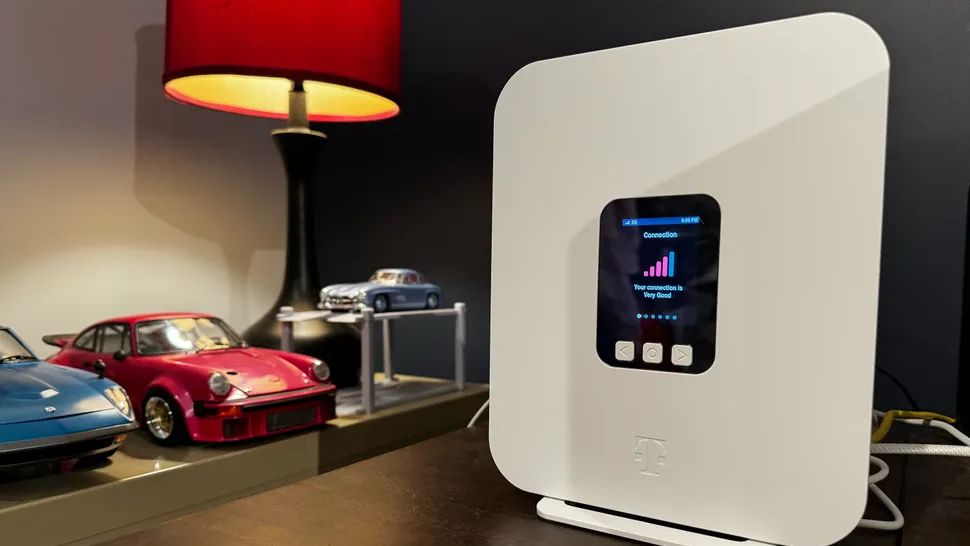Sony has a replacement for its current flagship QD-OLED TV, the extremely well-received A95L. That’s the model that was crowned “King of TV” at last year’s Value Electronics TV Shootout, which Verge editor-in-chief Nilay Patel served on the judging panel for.
The new model is called the Bravia 8 II. Sony claims that it has 125 percent the peak brightness of the A95L and 150 percent of last year’s Bravia 8, which will remain on sale as an OLED-but-not-QD option. It has a similar design to the A95L, and Sony even says it’ll be cheaper — though pricing information won’t be shared until later in spring.
The guiding mission of the Bravia lineup, according to Sony, is to deliver the most authentic cinema experience possible in the living room. Yosuke Nakano, from the company’s product planning department, claims the Bravia 8 II has the “most faithful reproduction of the professional monitor look of any TV in the industry.”
To that end, at a recent demonstration session at its Tokyo headquarters, Sony put the Bravia 8 II up against the A95L, Samsung’s S95D, and LG’s G4, along with even more formidable competition: Sony’s own BVM-HX3110 reference monitor, which you’d normally find on movie sets and studios for the most accurate HDR color grading possible.
If you haven’t seen one of these in person before, I kind of recommend not seeking one out, because it will ruin all other screens for you. It costs nearly $40,000 and has 4,000 nits peak brightness. It looks absolutely out of control, and I would dearly love to have one on my desk.
That’s what Sony is shooting for with the Bravia 8 II. Does it get there? Well, no. The BVM-HX3110’s higher brightness gives HDR footage an almost surreal look thanks to its finer control over contrast. But in each TV’s filmmaker mode, which is supposed to deliver the most accurate color possible, Sony got much closer than Samsung or LG. As the owner of a couple of LG OLEDs myself, I was actually a little surprised at how washed out and green-tinted the G4 tended to look in comparison.
Now, Sony won’t have chosen demo footage that might trip up its own displays, and it’s also at an obvious advantage when it comes to emulating the color reproduction of the BVM-HX3110. But Sony really is the market leader for reference monitors by some distance, so that still feels like a fair and relevant target. I would not be shocked if the Bravia 8 II turns out to be another winner by “King of TV” metrics.
Sony is also updating several other products in its home theater range. The Bravia 5 rounds out Sony’s lineup by bringing Mini LED backlighting to the midrange — it’s replacing the X90L, which uses full-array local dimming rather than Mini LED, and consequently Sony says the Bravia 5 has up to six times more dimming zones. This line comes in sizes from 55 to 98 inches, the upper end of which is larger than any OLED Sony sells.
Sony showed off the Bravia 5 against the X90L as well as Samsung’s QN85D “QLED” set. Also part of this demonstration was the BVM-HX310 reference monitor, which is similar to the BVM-HX3110 but “only” reaches 1,000 nits peak brightness.
The Bravia 5’s control over backlighting and blooming was clearly better than its predecessor, and it looked to be a more robust solution than Samsung’s as well. Sony also made a point of demonstrating its AI noise reduction feature, which is the kind of thing I’d normally run away from but have to admit was quite impressive — it did a good job of cleaning up old footage from Friends and Home Alone in real time.
Unsurprisingly, the Bravia 5 couldn’t come close to the BVM-HX310, since Mini LED still suffers in comparison to OLED when it comes to blooming and viewing angles. It also won’t match the Bravia 7, which is staying in the lineup and offers 100 percent the brightness and 25 percent more dimming zones. But at least in this demonstration, the Bravia 5 made the most convincing attempt to reproduce colors and contrast as well as you could reasonably expect from a mid-range Mini LED TV.
Sony is also introducing a new entry-level TV for the US, somewhat confusingly called the Bravia 2 II; the original Bravia 2 wasn’t actually sold in the US before. This is a fairly standard LED TV that comes in sizes from 43 to 77 inches, but you’ll get similar image processing and software integration to the rest of Sony’s Bravia range.
If you’re more of a projector person, Sony is adding the new Bravia Projector 7 to its range, joining the higher-end 8 and 9 models. The Projector 7 is pretty close to them spec-wise, reaching 2,200 nits in brightness and supporting 4K 120Hz. One difference is that the 7 has a “standard” lens, not the “advanced crisp-focused” optics seen in the 8 and 9.
The Bravia Projector 7 is replacing the well-reviewed VPL-XW5000ES, which is a $6,000 projector, so even though this is an entry-level product it’s an entry to a very expensive category. Still, it did look impressive in a demo against its closest competition from JVC, so I’d expect this to be a strong option for people considering a home theater setup.
Finally, Sony is introducing some new audio options to integrate with its Bravia TVs. The Bravia Theater Bar 6 is a 3.1.2 soundbar with upward-firing speakers, the Bravia Theater System 6 is a 5.1 setup-in-a-box with a less capable soundbar, and the Bravia Theater Rear 8 is a pair of wireless rear speakers. All of these products can be paired to Bravia TVs and controlled with the Bravia Connect mobile app.
As mentioned, Sony doesn’t yet have pricing details for any of its new Bravia products — that’ll come sometime this spring.

 7 months ago
69
7 months ago
69










 English (US) ·
English (US) ·